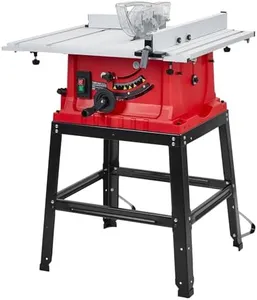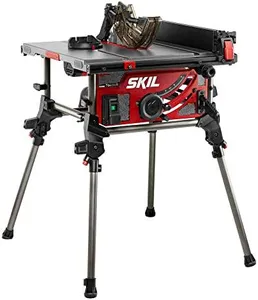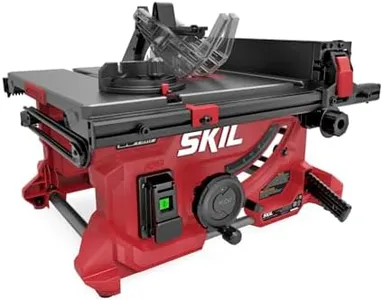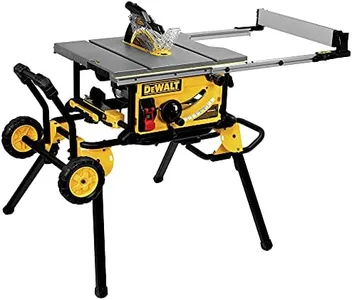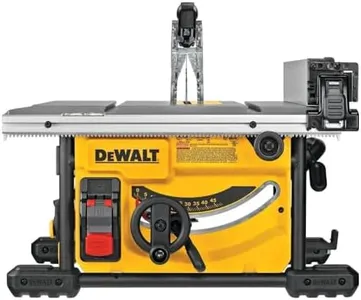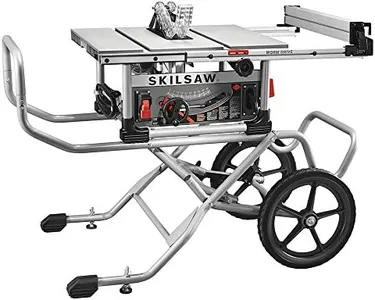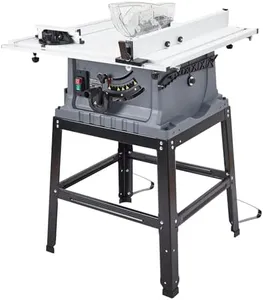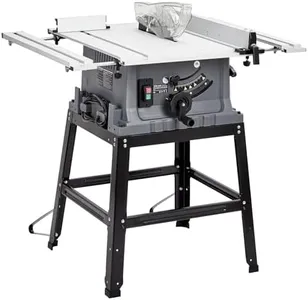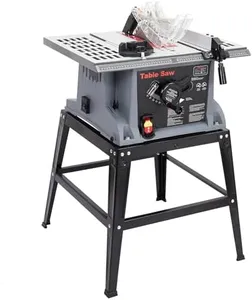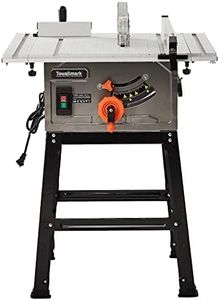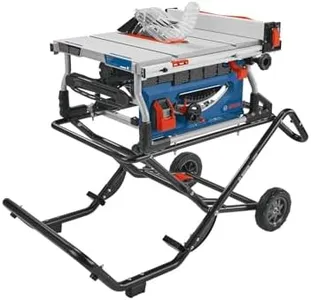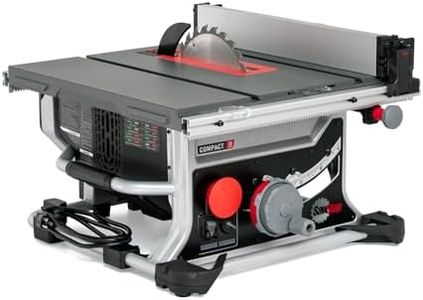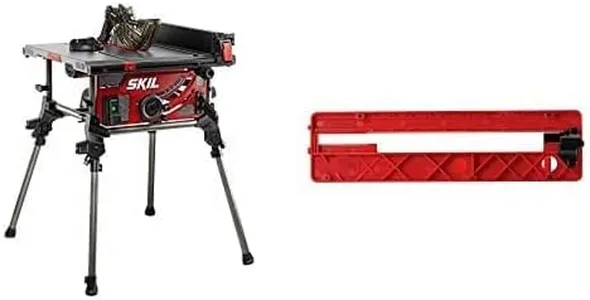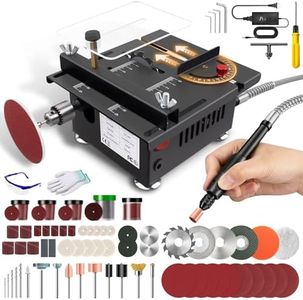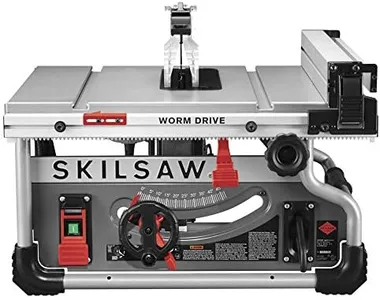10 Best Portable Table Saw 2025 in the United States
Our technology thoroughly searches through the online shopping world, reviewing hundreds of sites. We then process and analyze this information, updating in real-time to bring you the latest top-rated products. This way, you always get the best and most current options available.

Our Top Picks
Winner
SKIL 15 Amp 10 Inch Portable Jobsite Table Saw with Folding Stand- TS6307-00
Most important from
2513 reviews
The SKIL 15 Amp 10 Inch Portable Jobsite Table Saw (TS6307-00) is a solid choice for both DIY enthusiasts and professionals seeking a reliable portable table saw. One of its standout features is the rack and pinion fence rails, which ensure that the fence remains parallel to the blade, allowing for smooth and accurate cuts. This is particularly beneficial for users who prioritize precision in their woodworking projects. The integrated folding stand is another great advantage, making it easy to set up and store, which is a huge plus for those with limited space or who need to transport the saw frequently.
With a powerful 15 Amp motor and a 10-inch blade, this saw is capable of handling a variety of materials, including cutting wood up to 4x4 at a 90-degree angle. The parallel blade alignment feature with micro-adjustment also enhances cutting accuracy, providing an extra layer of versatility.
There are some drawbacks to consider. While it’s portable, at 51.2 pounds, it may be on the heavier side for some users to carry around compared to other models. Additionally, the dust port elbow effectively redirects dust, but depending on the setup, some users might find that dust collection could still use improvement. Safety features like the blade guard and anti-kickback pawl contribute to a safer working environment, making it suitable for those who may be new to using table saws. The saw comes with a three-year limited warranty, providing peace of mind about its durability.
This table saw is ideal for hobbyists and professionals alike who need a reliable and portable saw that doesn't compromise on power or accuracy. Just keep in mind the weight and the dust collection efficiency when making your decision.
Most important from
2513 reviews
SKIL 15 Amp 8-1/4" Compact Portable Jobsite Table Saw (Stand SFS0001 Sold Separately)-TS6308-00
Most important from
2513 reviews
The SKIL 15 Amp 8-1/4" Compact Portable Jobsite Table Saw stands out with its powerful 15A motor, making it suitable for a wide range of woodworking tasks. The 8-1/4-inch blade paired with a 24-1/2-inch rip capacity allows for effective cutting of various sizes of wood, including the ability to slice 3x materials with ease. The rack and pinion fence rails are a notable feature, ensuring the fence remains parallel to the blade for precise, quick, and smooth cuts. This is particularly handy for users who value accuracy in their work.
Additionally, the table saw includes safety features like an immediate shutdown switch, which enhances user safety significantly. Portable design and aluminum table construction make it easy to transport and store, a key consideration for jobsite environments. The dust collection system, however, isn't highlighted as a strong feature, which may require users to manage clean-up more frequently.
The product is also compatible with the SKIL Folding Stand SFS0001, though the stand is sold separately, which adds an extra cost for those needing a complete setup. At 39.5 pounds, it is relatively lightweight for its category, adding to its portability. The included accessories, such as the modular guard system, fence, miter gauge, push stick, anti-kickback pawls, and blade change wrenches, make it a comprehensive package for immediate use.
Most important from
2513 reviews
DEWALT 10-Inch Table Saw with Rolling Stand, 32-1/2-Inch Rip Capacity (DWE7491RS)
Most important from
5478 reviews
The DEWALT DWE7491RS 10-Inch Table Saw is a solid choice for both professional woodworkers and DIY enthusiasts looking for a reliable portable table saw. One of its standout features is the powerful 15 amp motor that can easily rip through hardwoods, making it suitable for a variety of projects. The table saw boasts an impressive 32-1/2-inch rip capacity, allowing users to cut larger materials like shelves and trim with ease, which is a fantastic advantage for those who work with bigger pieces. The rack and pinion telescoping fence system enhances accuracy and helps make fence adjustments smooth and quick, making it user-friendly even for those who may not be very experienced with such tools. Its onboard storage is convenient, providing easy access to essential components when working on projects.
Portability is another strength of this model; it comes with a rolling stand that facilitates quick setup and breakdown without compromising stability. The design of the telescoping fence rails allows the saw to be compact when not in use, aligning well with the needs of users requiring mobility.
On the downside, at 110 pounds, it is on the heavier side compared to some other portable options, which might make transportation a bit cumbersome for some users. While it features a 2-1/2-inch dust collection port that effectively connects to a vacuum for clean operation, some users might find that the dust collection efficiency could be improved further. Safety features like the blade guard and the riving knife are present, but always ensure to follow safety practices when using power tools.
Most important from
5478 reviews
Buying Guide for the Best Portable Table Saw
Choosing the right portable table saw can make a significant difference in your woodworking projects. A portable table saw is a versatile tool that combines the power of a stationary table saw with the convenience of mobility. When selecting a portable table saw, it's important to consider several key specifications to ensure it meets your needs and provides the best performance for your tasks.FAQ
Most Popular Categories Right Now
